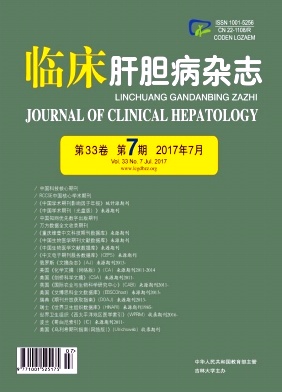Objective To investigate the incidence rates and features of non-alcoholic fatty liver (NAFL) and nonalcoholic steatohepatitis (NASH) , and to provide a theoretical basis for health management and development of intervention and preventive measures in the health management department.Methods Physical examination reports in 2016 were obtained from a large IT company to analyze the incidence rates of NAFL and NASH in different age and sex groups, as well as the correlation with the indices including overweight (or obesity) , triglyceride, fasting blood glucose, blood uric acid, and blood pressure.The chi-square test was used for comparison of rates.Results In all employees, the incidence rates of NAFL and NASH were 4.51% and 17.64%, respectively, and the overall incidence rate of these two diseases was 22.15%.The NAFL-NASH group had significantly higher incidence rates of overweight (or obesity) (91.20% vs 12.68%, χ2=7571.9, P<0.001) , hyperlipidemia (95.06% vs 9.27%, χ2=9373.8, P<0.001) , and hyperuricemia (40.02% vs 10.51%, χ2=1591.90, P<0.001) than the non-NAFL-NASH group.Compared with female employees, male employees had significantly higher incidence rates of NAFL (6.78% vs 1.81%, χ2=190.35, P<0.001) and NASH (25.04% vs 5.06%, χ2=991.90, P<0.001) , as well as significantly higher incidence rates of overweight (or obesity) (40.90% vs 12.97%, χ2=1319.10, P<0.001) , hyperlipidemia (36.00% vs 16.07%, χ2=696.22, P<0.001) , hyperglycemia (2.17% vs 0.64%, χ2=53.82, P<0.01) , hyperuricemia (26.76%vs 1.69%, χ2=1581.10, P<0.001) , and hypertension (6.21% vs 1.22%, χ2=170.94, P<0.001) .Compared with those aged<35 years, the employees aged ≥35 years had significantly higher incidence rates of NAFL (8.13% vs 4.47%, χ2=41.56, P<0.001) and NASH (21.73% vs 16.76%, χ2=24.72, P<0.001) , as well as significantly higher incidence rates of hyperglycemia (2.79% vs1.43%, χ2=17.26, P<0.001) and hypertension (6.33% vs 4.03%, χ2=18.56, P<0.001) while="" there="" were="" no="" significant="" differences="" in="" the="" incidence="" rates="" of="" overweight="" or="" and="" high="" uric="" acid="" between="" these="" two="" groups="" all="" p="">0.05) .Conclusion Although IT employees are young, there is no significant reduction in the incidence rate of nonalcoholic fatty liver disease.The development of NAFL and NASH has the clinical features of overweight (or obesity) , hyperlipidemia, and hyperuricemia, which are commonly seen in male patients.Older employees have higher incidence rates of NAFL, NASH, hyperglycemia, and hypertension than younger employees.







 DownLoad:
DownLoad: